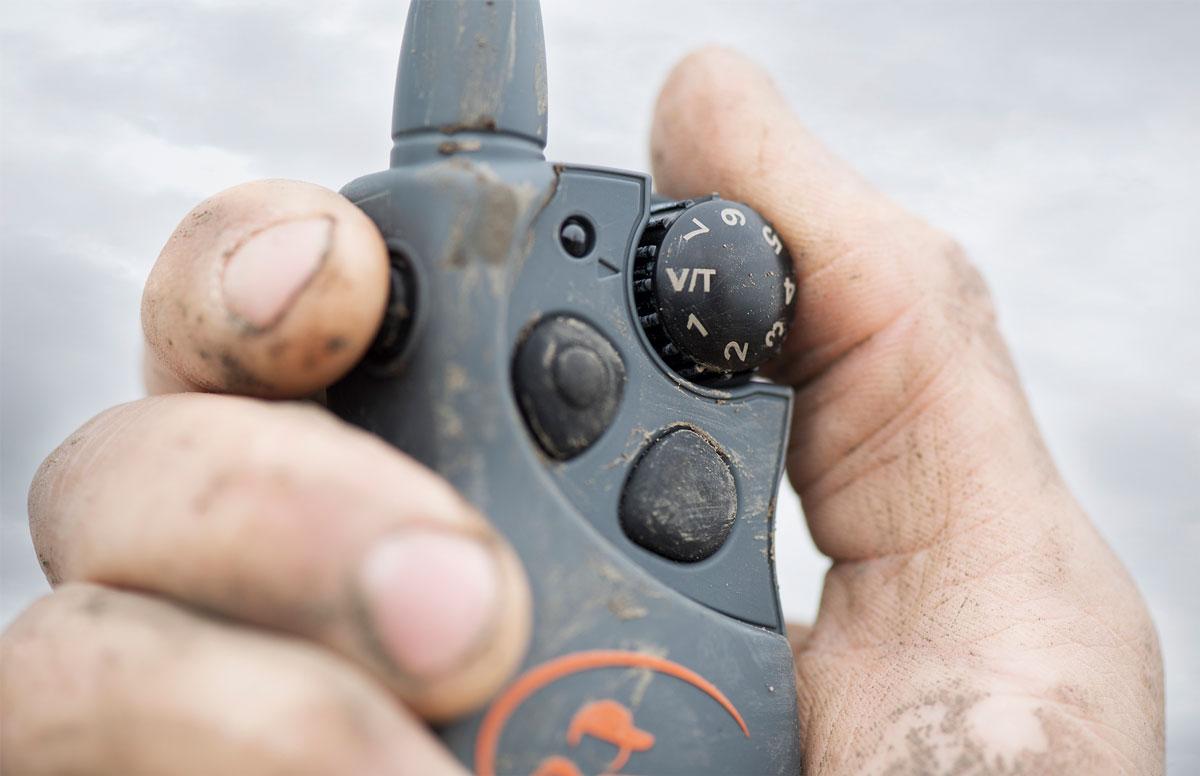
Finding Your Dog's “Just Right” E-Collar Level
Posted by The SportDOG StaffMany times, for a new hunting dog owner who’s just purchased their first remote trainer, there’s an urge to strap on the collar right away and start pressing buttons. Some novice trainers mistakenly think that a modern e-collar is a magic remote control, in which dogs instantly and robotically obey every command. Others wait for their dog to disobey, and then push a button to punish him. Of course, neither of those tactics are very effective. In fact, properly training a hunting dog with an e-collar takes time and, most importantly, focus.
One of the most fundamental tasks when preparing to train with a remote training collar is finding the right level for your dog. This level is based upon many factors, including your dog’s breed, age, hair coat, and their own individual temperament. Call it the Goldilocks principle - you’re looking for something that’s not too hot, and not too cold - but just the right temperature.
Fortunately for trainers, SportDOG® e-collars offer a wide range of static stimulation levels, as well as vibration and tone. This wide range of levels lets handlers fine-tune their corrections so that they are appropriate for any dog - “just right,” if you will.
But before you start using your new system, first take the time to understand how it works. Read the training manual and familiarize yourself with your remote and the function of each button, dial, and switch (if applicable). Knowing how to properly operate your device will allow you to make more consistent and immediate corrections, which result in a more effective training session. In fact, our dial remotes are designed for "no-look operation,” which means you can keep your eyes focused on your dog, and not on your equipment.
Finding your dog’s level is an important, but fairly straightforward task. Keep in mind that most SportDOG collars offer multiple ranges of stimulation in the collar on top of the levels accessible from the remote. The number of times the collar beeps when it is turned on let's you know its current setting: one beep for low, two beeps for medium, and three beeps for high. Check your product manual or our support site to determine which ranges your collar has and how to adjust it.
Once your remote and collar are fully charged and functioning, put the e-collar around your dog’s neck. The collar should be snug enough so that the metallic points make contact with the dog’s skin, but not so tight that he has difficulty breathing. Give them a few minutes to become comfortable wearing the collar before you push any buttons.
Once they’ve settled down, dial your remote to its lowest setting and push the static stimulation button. It’s very important to pay total attention to your dog during this process.
What you’re looking for is some subtle change in your dog’s behavior. Your dog may cock his ears, tilt his head, or scratch. It’s quite possible that on the lowest level, your dog won’t notice anything. Simply increase the static level by one and repeat the process. If your dog yelps or becomes anxious, the level is too high.
Finding your dog’s correct level is essential for effective training, because your dog will positively and quickly learn how you want him to respond to that stimulation. To effectively train a hunting dog, the goal is not to punish or instill fear - in fact, that’s usually counterproductive. Instead, the static stimulation is meant to refocus a dog on a desired behavior.
Bear in mind that your dog’s level will fluctuate on a number of environmental factors and the level of infraction. For example, a dog that’s being trained in the familiar surroundings of his backyard will likely need a lower level of static than a dog that is hunting wild-running rooster pheasants. In the same sense, a dog that's slightly out of heel will need a lower level of static than a dog that's ignoring a recall command and running towards a road. Your job is to continually “read” your dog so you can understand how to issue the proper level of stimulation.
There’s one final and very important thing to remember: teach your dog how to properly respond to a command on a leash or check cord before introducing the e-collar. Making your dog “guess” the proper response to a command is unfair to your dog and can actually detract from your training program. Starting out with a leash or lead allows you to physically help your dog comply with a command. Once they’ve mastered that, then it’s time to overlay the static stimulation as a cue for a desired behavior.
Learning how to use the “just right” level of stimulation might seem pretty basic, but it will teach you the importance of maintaining complete focus on your dog - which will serve you well as your training program advances.
Read our E-Collar Training 101 guide to learn more about our recommended method to introducing the e-collar.

The SportDOG Staff
Related Products


